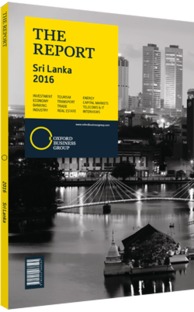Nelson Liu, Overseas Operations Officer, China Merchants Holdings International: Interview

Interview: Nelson Liu
How cost-competitive is Colombo relative to major international ports like Salalah and Singapore?
NELSON LIU: Colombo is one of the most cost-competitive ports in the trans-shipment business. Its strategic location means only a minimal deviation from the primary east-west shipping route. This is complemented by a guaranteed service delivery that meets international standards. More specifically, Colombo operates 24 hours a day, seven days a week all year-round, unlike other ports such as Salalah in Oman. A reliable feeder network servicing Colombo is another advantage. Conversely, Singapore practises a different business model when it comes to feeder invoicing. While the general consensus is that Singapore remains expensive, they enjoy the advantage of a higher frequency of main line calls to multiple destinations on a weekly basis. This is a critical factor in attracting the highly volatile trans-shipment business. As a result, they remain in a different league entirely.
The Port of Colombo is unique among trans-shipment hubs in that there are three terminal operators, giving shipping lines a choice that they lack elsewhere. Shipping lines in other hubs do not have the same options. While all three might not be on par with regard to infrastructure, the East Terminal development will go ahead given the demand.
To what extent does further scope exist for improved efficiencies at the Port of Colombo?
LIU: There is great potential for development when it comes to electronic documentation at the Port of Colombo. With the recent introduction of a Customs clearance process operating 24 hours a day, Colombo has definitely been making some headway, especially when it is compared with the fate of other ports within the region. Indeed, as a terminal, we are ready to implement the truck booking system to expedite import delivery. We are currently waiting for the industry to latch onto this benefit in the near future.
What advantages does Colombo enjoy as the only deepwater draught terminal in South Asia?
LIU: This remains the largest foreign investment in the country to date, and the government deserves plenty of credit for foreseeing the need for improvements in infrastructure during a volatile period in the country’s history. The Indian subcontinent has the potential to develop as a major economic centre in the world, and Colombo is at the heart of maritime trade within the region. As the sole deepwater terminal capable of handling the 18,000 twenty-foot equivalent unit (TEU) ships in this region, Colombo should harness its strategic location to promote its prominence as a regional hub. This is especially important when you consider the new order book for vessels over 18,000 TEUs. The world’s two leading carriers alone have 51 such ships on order. With the current record in terms of TEU capacity, the Orient Overseas Container Line has six 21,000-TEU ships ordered for delivery in 2017.
How will the development of Indian ports affect Sri Lanka’s positioning for trans-shipment?
LIU: Colombo is not trying to compete with India, but rather plays a complementary role in facilitating India’s inbound and outbound trade. With the projected growth of the Indian container market, we believe Colombo will continue to play a critical role. Regarding India’s port development, we feel Sri Lanka’s position will remain safe for the next decade.
From the total east coast cargo base, 35% of goods are going through direct calls already, with the balance directed through trans-shipment hubs like Colombo. While shipping lines are building larger ships, we must ask whether or not it makes economic sense for these ships to deviate from the east-west route and go into Chennai or Calcutta. We also expect Sri Lanka to pick up over the next decade, driving domestic container volumes, which have previously been stagnant. This will also be a driving catalyst.
You have reached the limit of premium articles you can view for free.
Choose from the options below to purchase print or digital editions of our Reports. You can also purchase a website subscription giving you unlimited access to all of our Reports online for 12 months.
If you have already purchased this Report or have a website subscription, please login to continue.

